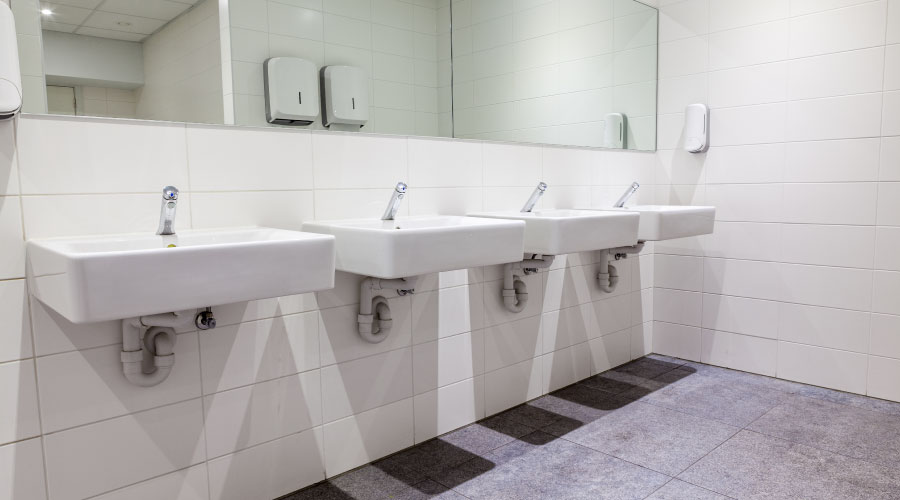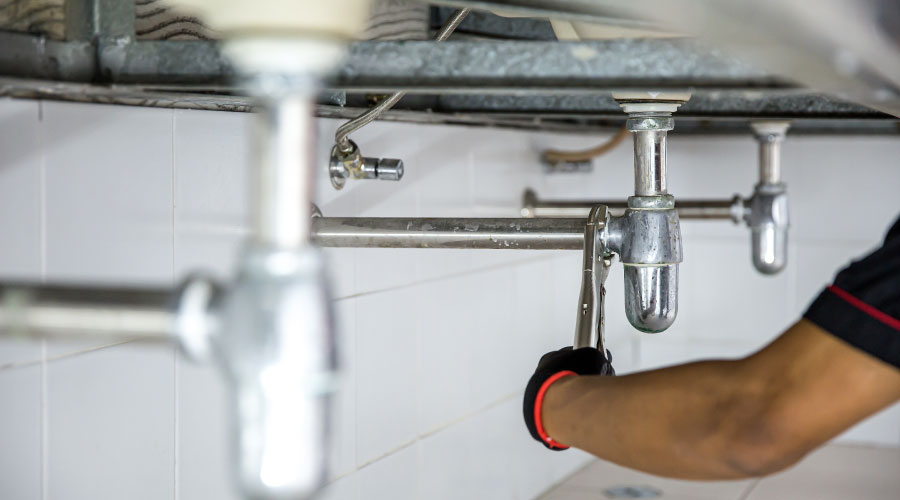Five Ways to Reduce Restroom Operating Costs
In this age of cost cutting, facility managers are taking a close look at all aspects of their operations, including restrooms. Maintenance, cleaning, energy use, and even supplies are all being examined to find ways to reduce costs without curtailing service. Many have been successful, often by incorporating simple yet overlooked features.
Of course, the best time to implement features to save restroom operating costs is during the design process. It is here that facility managers should look long-term instead of focusing solely on the first costs. Focusing on first costs fails to take into consideration that over the life of a typical restroom, energy, maintenance, and operating costs will greatly exceed first costs. Making poor design decisions at this point may reduce first costs somewhat, but most likely will result in greatly increased operating costs. And because the typical restroom has a service life of 20 years or more, these mistakes will impact costs for a long time.
1. Water Costs
Even with the mandated use of low-flow fixtures and faucets, water use remains a major expense. Fortunately, facility managers have options to minimize restroom water costs.
Electronic faucets are a very effective means of reducing water use. In a typical installation, they can produce water savings in the range of 50 to 80 percent when compared to manual faucets. While the units are more expensive to purchase than manual faucets, the cost savings produced by using less water typically recover this additional first cost in one to three years.
Most electronic faucets are powered by batteries. While early generation faucets required frequent battery changes, today's generation uses batteries that can last up to five years. Some models offer the option of being powered by a solar cell that can power the unit off of room lighting.
Electronic faucets also offer several other advantages. Because they are touchless in operation, their installation helps to improve sanitation and cleanliness within the restroom. Being touchless also reduces wear from use and abuse.
Automatic flush valves for toilets and urinals are also an effective means of reducing water use in restrooms. On average, automatic flush valves reduce water use by 50 to 70 percent when compared to manual flush valves. These units typically cost twice as much as manual valves, but the savings in water use can recover the cost difference in as little as two years. As with electronic faucets, automatic flush valves use batteries that typically last between two and five years.
Automatic flush valves also improve sanitation within the restroom. Because they are touchless, they improve hygiene for the user. Touchless controls also eliminate a major maintenance headache for maintenance personnel by doing away with the manual flush valve, which is frequently subjected to harsh treatment by users.
Managers can further reduce restroom water use by installing fixtures that go beyond the current minimum standards for water use. For example, the standard toilet today uses 1.6 gallons per flush. High-efficiency models are available that can reduce water use to 1.28 gallons per flush. Dual flush units are available that offer both 1.6- and 1.28-gallons -per-flush operation.
Waterless urinals have also been used successfully in a wide range of applications for several years now.
Related Topics:













